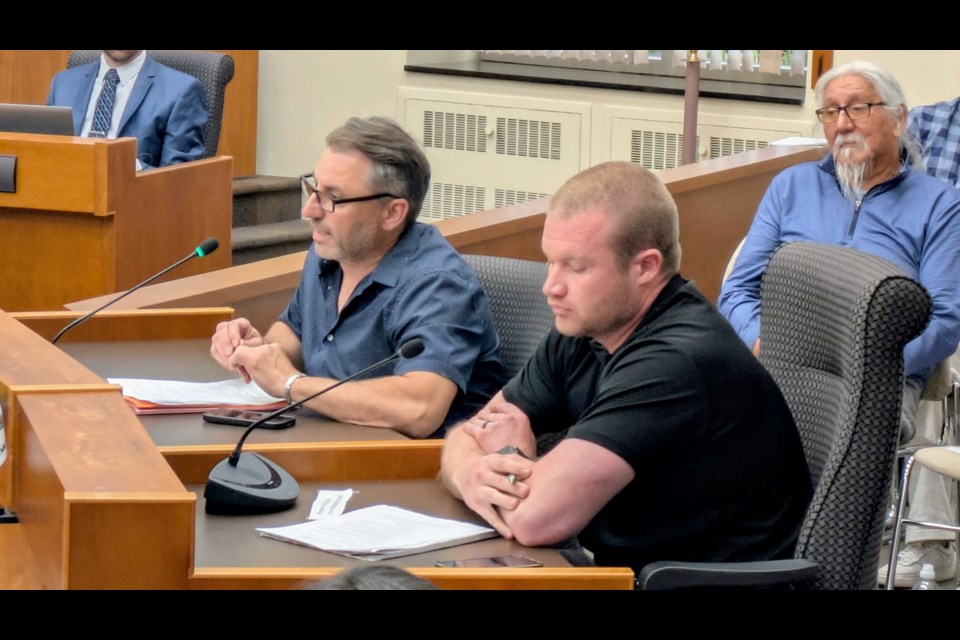THUNDER BAY – “Why offer us $125,000?” said Tony DiPaolo, the vice-chairman of the Fort William BIA, to council on Monday.
As part of it's plan to build a shelter village at 114 Miles St. East, the city has promised the BIA a $125,000 contribution to accommodate its efforts in revitalizing the south downtown core and to address concerns related to security and cleanliness.
The BIA has explicitly stated that they are opposed to the Miles Street site for the temporary shelter village, which was narrowly approved by council and moves forward for ratification next Monday.
DiPaolo told council the $125,000 contribution from the city indicates to the BIA that the city is expecting an escalated problem of safety and cleanliness if the shelter village is placed in the south core.
“If there were no heightened risk, why earmark 6 figures a year for mitigation? Either administration is quietly acknowledging safety concerns it has not disclosed, or the payment is a political payoff to mute opposition. Both undermine trust. The dollar figure is arbitrary and untested. The BIA is not a security agency, and if we were, $125,000 would not be sufficient for such a large area,” DiPaolo said.
Coun. Kristen Oliver asked city staff to address DiPaolo's claims.
City Manager John Collin said their offer to the BIA is the same amount offered to the BIA last November, when the Miles Street site was first proposed.
“We had no intent of providing security enhancements to the BIA. They voiced concerns, and we wished to address their concerns. At first, I believe we suggested 40,000. They said that really wasn't enough, so we tripled that,” Collin said.
“There is nothing nefarious about this. There's no hidden data. There are no hidden objectives. It was simply to help mitigate a concern that they had, but it's not truly founded in fact.”
Collin said that there is “virtually” no statistical data that shows a rise in crime rates “in and around a shelter village.”
“Quite the opposite, and forgive me, I'm going to give you a couple of examples in Los Angeles in a five-year period where the crime rate in all of Los Angeles increased by 19.4 per cent. In the areas around eight different shelter villages within a quarter mile, the crime rate actually didn't go up by that 19 per cent. It went down by 25 per cent,” Collin said.
He also said a shelter village in Vancouver, Washington, saw a 29 per cent drop in crime in the first year of operation.
When the overall crime rate rose by 14.3 per cent in one year in Denver, there was a 2.8 per cent drop in crime around village sites. The next year, those rates dropped by 14 per cent.
Peterborough reported 80 to 90 per cent decrease in calls for emergency services in the neighbourhood of its shelter village, he said.
Coun. Greg Johnsen turned his attention to the representatives of the Thunder Bay Police Service, one of many local organizations that support the location, and were present to field any questions from council from a policing perspective.
He asked Police Chief Darcy Fleury to share his insight on the safety issues surrounding the shelter village.
Fleury said the police service performed a risk assessment on all the village locations and gave the floor to Staff Sergeant Jason Anderson to elaborate.
“Our risk assessments were provided to the city in regards to several of the locations that were being looked at. Those risk assessments focused on the health and safety of the people that are going to be living in the encampments themselves. They revolved around proximity to waterways, railways, and busy streets, as well as some design suggestions regarding the actual encampment itself,” Anderson said.
“Obviously, those were graded differently for each site, and the site we're discussing now came in as a low-risk site due to the fact that we don't have close proximity to waterways or railways, and the streets surrounding the site are low traffic.”
Coun. Rajni Agarwal asked when the police service did the risk assessment on the village site, did they assess the safety concerns of the nearby residents or just the inhabitants?
Fleury said the risk assessment was for the inhabitants of the village but said when police perform risk assessment, they consider the overall arching public safety piece for the residents in the area.
“When we do these examinations, we look at what's going to happen, we look at the situation as it relates to the residents. We also pay attention to the surrounding areas, not so much on the risk assessment for the site itself, but it does go with our overall planning down the road,” Fleury said.
He said part of the police services planning is evaluating what resources they will need to keep everyone safe, meaning they are going to work with the agencies to provide the wrap-around services to meet their goal of transitioning the shelter inhabitants, as well as bylaw enforcement.
“Illegal activity happening in or around or near any of those encampments or the village itself, that's what the police would deal with,” Fleury said.
“If somebody's misbehaving or acting up or camping wherever they want outside of what this program's going to allow, that would be a bylaw situation, and of course, we would support the bylaw should they decide to move somebody or tell them they can't stay in those locations.”
